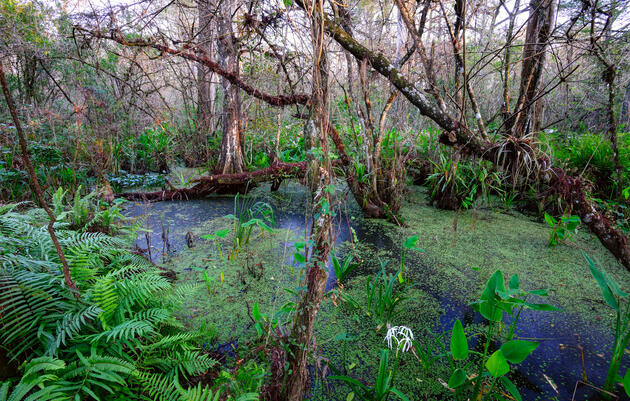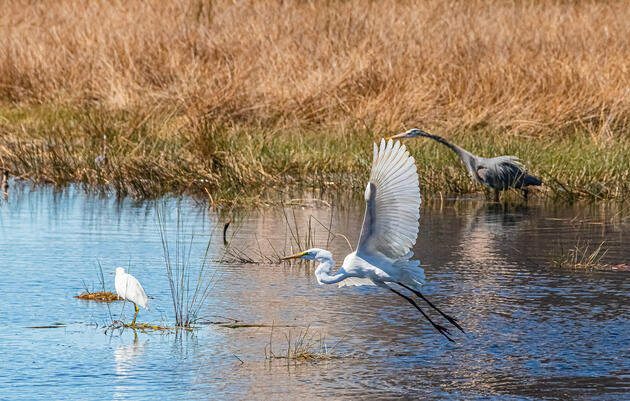With rampant development downstream of the Sanctuary requiring increased flood control, Corkscrew Swamp Sanctuary’s wetlands are drying out faster and for longer each year, despite no apparent change in the amount of rainfall. These long-term trends are difficult for swamp visitors to see given the annual rise and fall of water levels, but the altered ecology of our region is clear when we look to the birds as indicators.
Wood Storks need specific water level conditions in order to find adequate food and suitable nest sites. Wood Storks prefer nesting sites surrounded by standing water and their large size and fast chick growth require an abundant food supply throughout the nesting season (December through May). Historically, thousands of Wood Storks nested annually at Corkscrew Swamp Sanctuary, but in recent decades these birds have often decided not to initiate nesting at Corkscrew, or have nested in only small numbers. This unfortunate reality triggered efforts to investigate the possible causes.
Last year, Audubon completed a modeling study that pointed to water management activities having the greatest influence on the Sanctuary’s water loss. The analysis also pointed out a few areas where more data were needed to fully understand and develop solutions for the over-drainage that could return the Sanctuary to 1960s-1970s water levels.
Over the past year, Audubon expanded hydrologic monitoring in natural areas, adding four telemetered water level recording stations in the Sanctuary and two new temporary wells in Bird Rookery Swamp. Additionally, last year Audubon conducted a pilot study to evaluate the accuracy of the model’s ground elevation data. This effort demonstrated that improvements were needed and tested a boots-on-the-ground approach for collecting more accurate data. The success of Audubon’s pilot effort, prompted an extensive ground survey effort by South Florida Water Management District who is near completion of over 22 miles of survey transects bisecting Corkscrew Swamp and providing vastly improved information on the topography of the Corkscrew basin.
A pilot sonic drilling study conducted this spring downstream of the Sanctuary in Bird Rookery Swamp will tell us about the geology that determines how groundwater moves out of the Sanctuary. By improving our understanding of current conditions, our topography, and the hydrogeology downstream of the Sanctuary, scientists and engineers can work to identify ways to restore the hydrology of the Sanctuary, protecting our swamp’s delicate ecology while continuing to provide necessary flood control for our neighbors.






